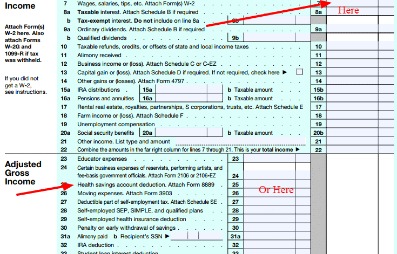Content

The method is used when there is unpredictability in the collection of funds from the customer. It is simple to use, as it is easy to determine when a contract is complete. In addition, under the completed contract method, there is no need to estimate costs to complete a project – all costs are known at the completion of the project. As a taxpayer in the construction industry, there are various accounting methods to choose from that will have an impact on tax-related cash flow over the life of your business. It is important for contractors to be aware of the methods and together with their tax advisors, determine which method best suits their business need and growth goals.

The information given regarding estimated completion costs was not needed in this problem. However, it is relevant if the percentage-of-completion method is used instead of the completed-contract method. Both under IFRS and GAAP, companies postpone tax obligations during the contract because they do not report profits. Under US GAAP and IFRS, companies can use this method when results cannot be measured reliably. However, both differ in recognizing revenue and expenses related to the contract. We are a company that hired a contractor to manage a renovation on a building that we purchased. We have received notices of liens against the contractor for our location.
Final Thoughts on the Completed Contract Method
In construction specifically, there are two exceptions to this rule. Since revenue reporting is postponed, tax liabilities are also deferred — sort of. The reduction of your business tax rates with expense recognition is also delayed. % Completed is determined as costs incurred divided by estimated total costs. An adjusting journal entry occurs at the end of a reporting period to record any unrecognized income or expenses for the period. At the end of year one, 50% of the project has been completed.
- If there is a loss during the completion of the project, then such losses are deductible only after project completion.
- Long-term contracts that qualify under §460 are contracts for the building, installation, construction, or manufacturing in which the contract is completed in a later tax year than when it was started.
- At the end of the construction, which ended up being 9 months instead of 8 months, the company pays the $5 million to WAY.
- We strive to empower readers with the most factual and reliable climate finance information possible to help them make informed decisions.
- As the costs for each contract are incurred, the contractor is essentially working towards the goal of completing the contract…and reaching their estimate of total costs for the job.
- On assets, the company eliminates the construction-in-progress account.
- To recognize the costs of the contract, they’ll credit Construction in Progress and debit their expenses.
At the end of 20X2, construction was 37% complete ($30,000 ÷ [$30,000 + $50,000]), so the revenue recognized for 20X2 was $37,500. At the end of 20X3, we know construction was completed because the estimated cost to complete as of the end of 20X was zero. Therefore, the $62,500 remaining revenue on the contract—$100,000 minus the $37, recognized in 20X2—was recognized in 20X3.
Percentage of Completion-Capitalized Cost Method
As the What Is The Completed Contract Method progresses, the revenues & expenses are accumulated in the balance sheet till the last day of completion of a contract. It is only after completion of the contract when the figures are moved from the balance sheet to the profit & loss account. You can observe from the above reading that the disadvantages of this method are more than the advantages. Thus, if you want a better picture of the contract status, the percentage completion method of accounting is upheld in all accounting standards, tax laws, etc. The completed-contract method will not reflect your yearly revenues, profits, or expenses in the period they’re incurred or earned.
What is the difference between percent complete and completed contract?
Under percentage of completion, a contractor recognizes project income and expenses as the project progresses, usually on a monthly basis. In contrast with percentage of completion, the completed contract method is used to recognize project revenue and costs only when the contract is complete.
The disadvantages of the completed contract method are that it can impact a business’s cash flow and working capital. It can also lead to unstable bottom lines, making it difficult to secure financial partners or bonding. Under the completed contract method, contractors only recognize revenue once all deliverables specified in the contract have been completed and delivered to the customer.
Journal Entries of Completed Contract Method
The language in US https://intuit-payroll.org/ for construction and production-type contracts are written in terms of options rather than prescription. If certain criteria are met, the percentage-of-completion method is used in US GAAP. If not, the completed contract method is used.
- Assume, the company incurs a cost of Rp220 in the first year and Rp80 in the second year.
- As the contractor won’t claim any revenue until the project is completed, tax liabilities are also deferred to the next tax season.
- If a contractor’s average annual gross receipts exceed $10 million then the Internal Revenue Service will consider that a large contractor.
- So, the laws of the country may require the contractor to follow the percentage completion method subject to few exceptions.
- This accounting can often lead to large fluctuations in reported revenue, as contracts can take months or even years to complete.
- As a result this method of accounting can pose some risks, one of which is a volatile bottom line.
The completed-contract method is used when costs are difficult to estimate, there are many ongoing small jobs , and projects are of short duration. This method can be used only when the job will be completed within two years from inception of a contract. Financial Statements Of The CompanyFinancial statements are written reports prepared by a company’s management to present the company’s financial affairs over a given period . Performance obligations are looked at by ASC 606 as opposed to contracts under completed contract accounting. Ensuring that your contract provides appropriate conditions for the transfer method ensures that you also take advantage of the tax deferral benefits.
What is the Completed Contract Method?
The advantages of the completed contract method are that it allows businesses to defer revenue and tax obligations until payment is assured. It also provides an accurate picture of a business’s financial health. Let’s say you are a contractor that has a $10,000 contract with 50% completion. You would recognize $5,000 of revenue under the percentage of completion method. Under the completed contract method, you would only recognize $2,500 of revenue since you have only completed 50% of the project. You shall make journal entries that are similar to when you are using the percentage of completion method.
INNOVATIVE SOLUTIONS & SUPPORT INC Management’s Discussion and Analysis of Financial Condition and Results of Operations (form 10-Q) – Marketscreener.com
INNOVATIVE SOLUTIONS & SUPPORT INC Management’s Discussion and Analysis of Financial Condition and Results of Operations (form 10-Q).
Posted: Tue, 14 Feb 2023 08:00:00 GMT [source]
